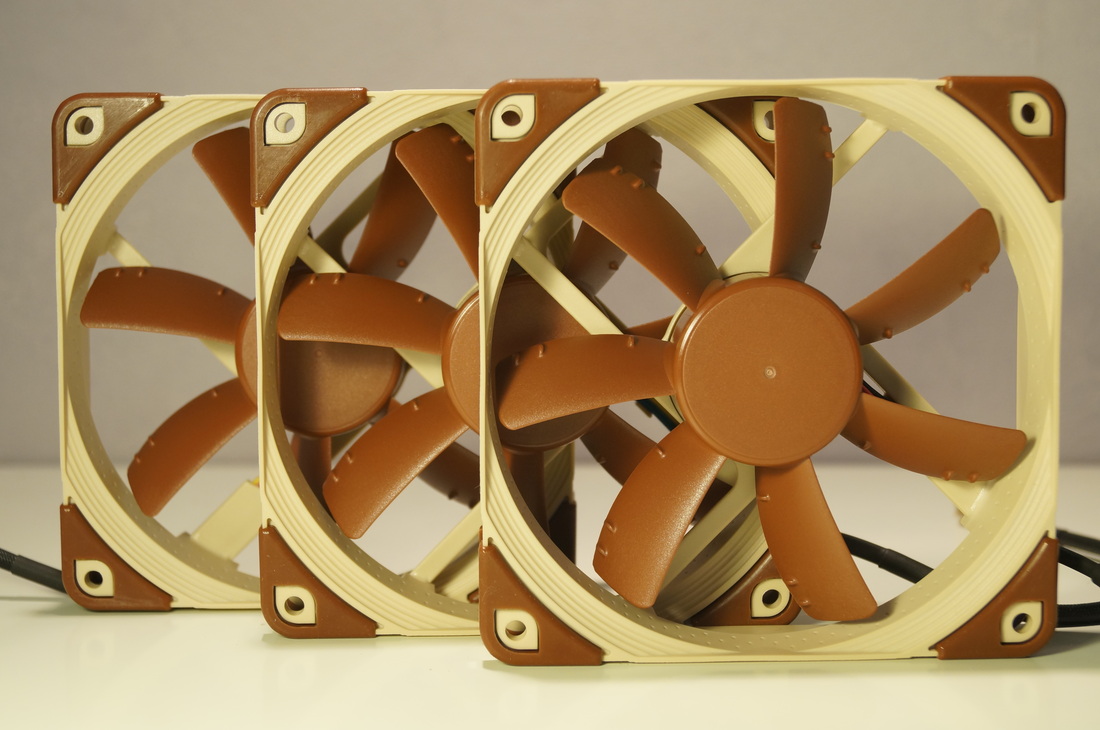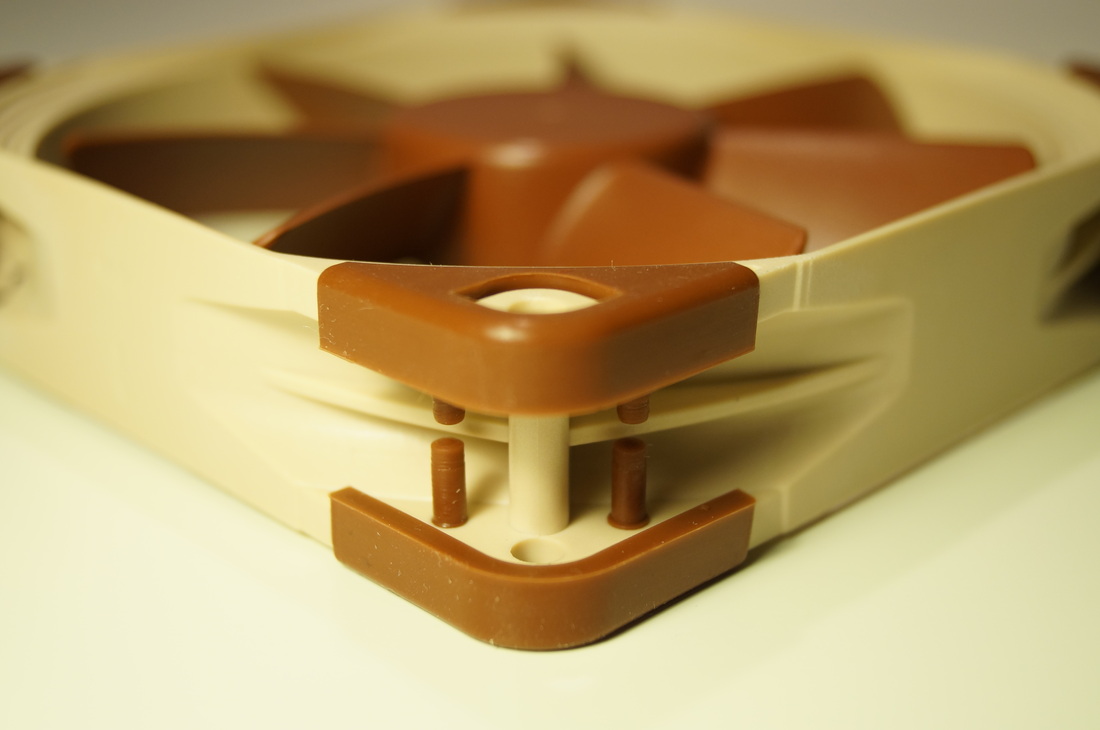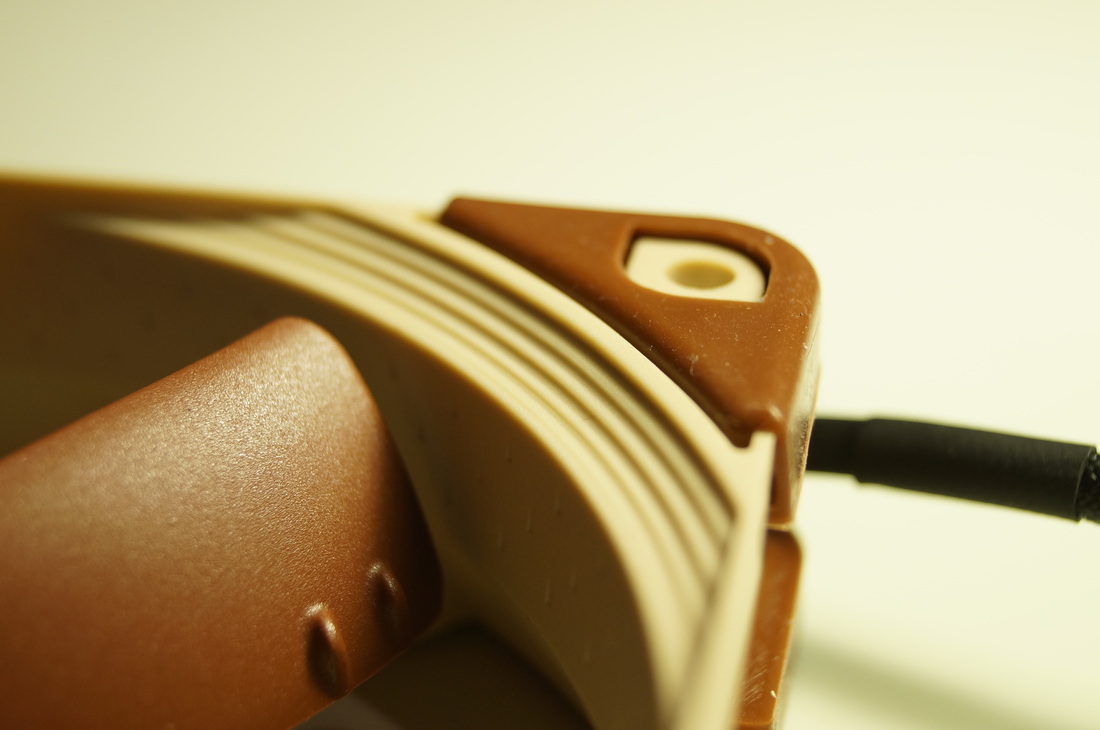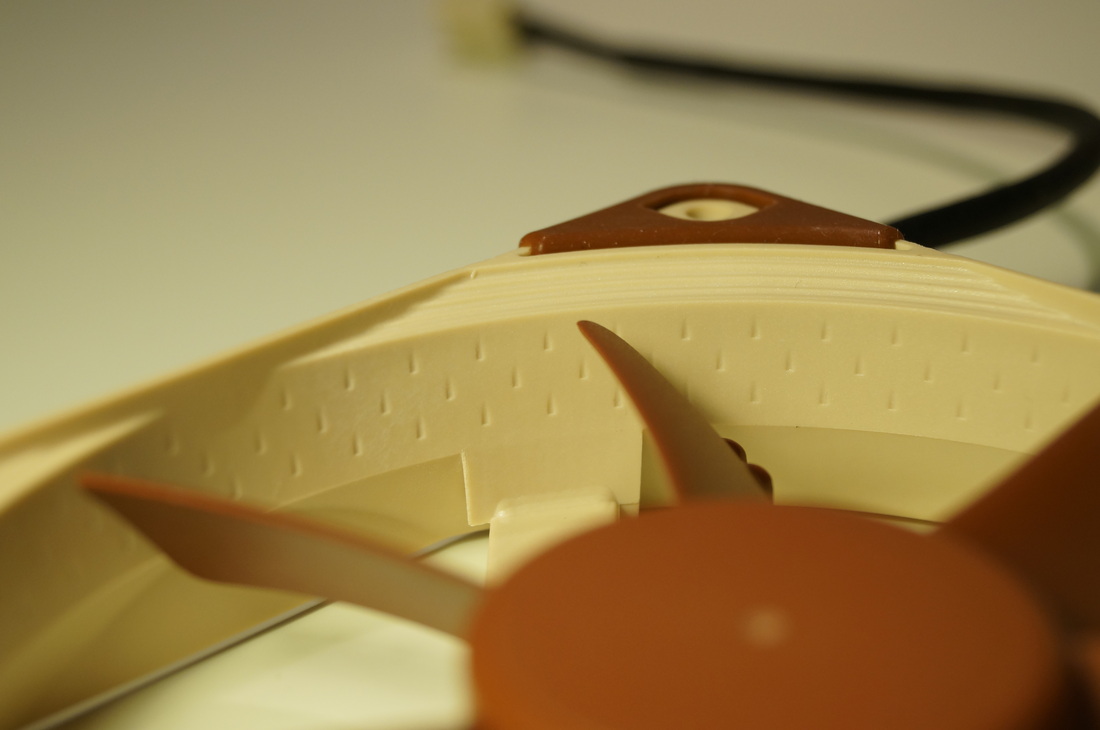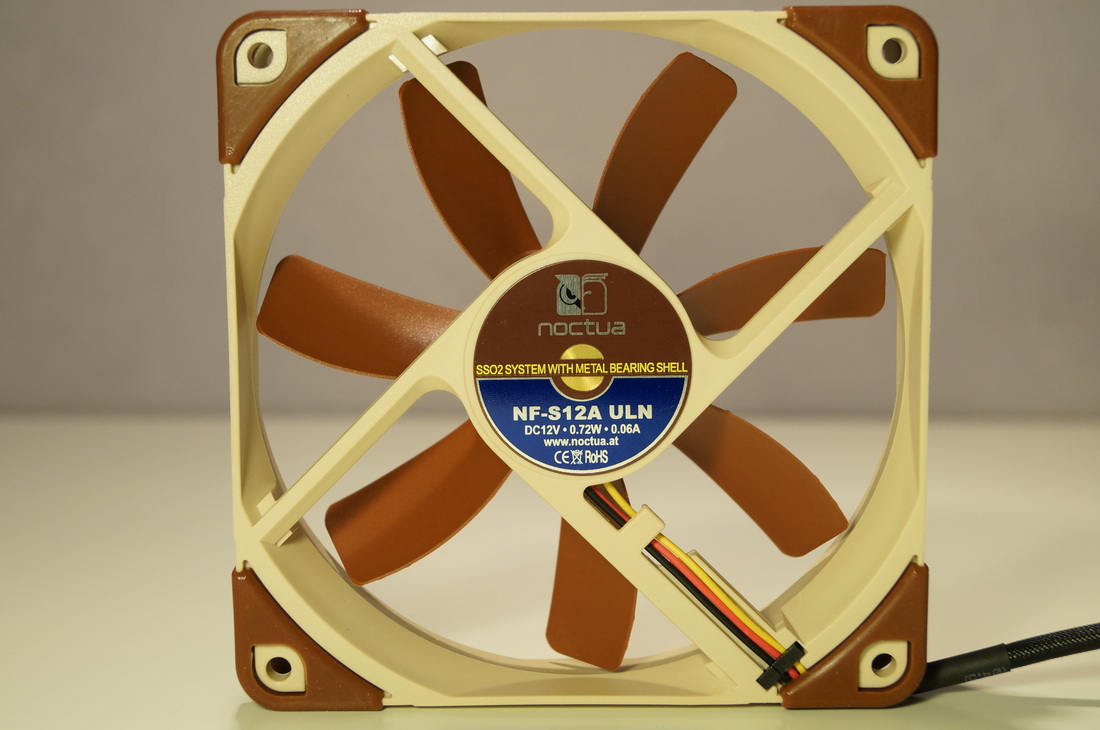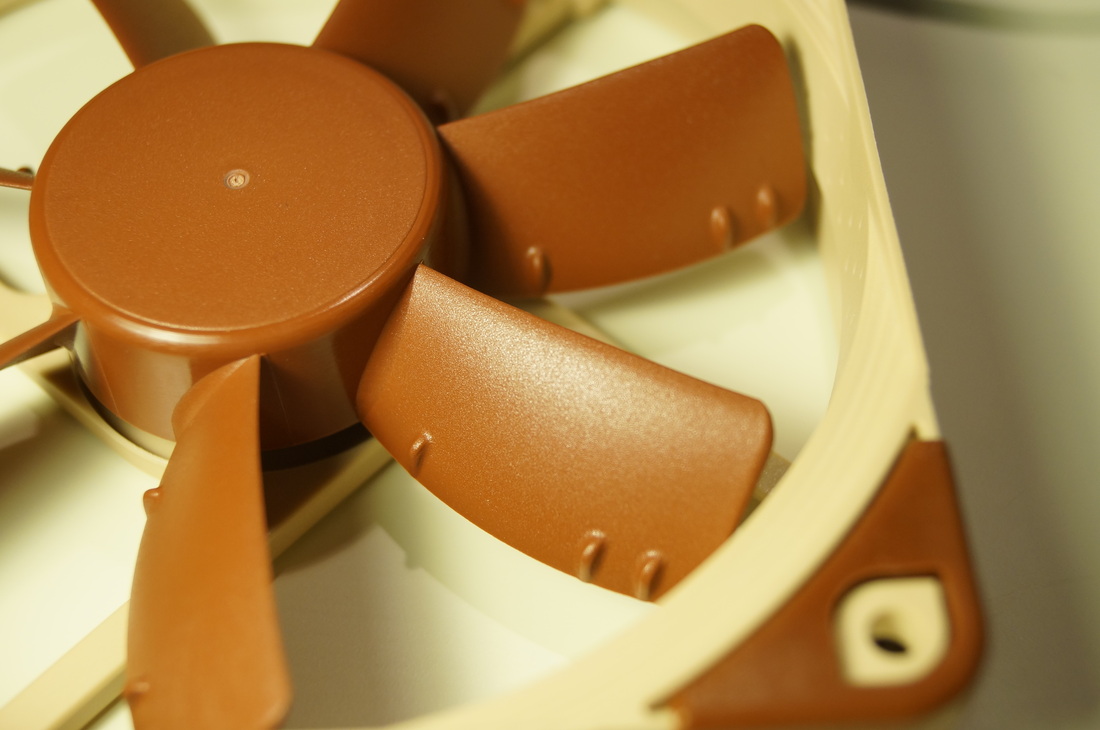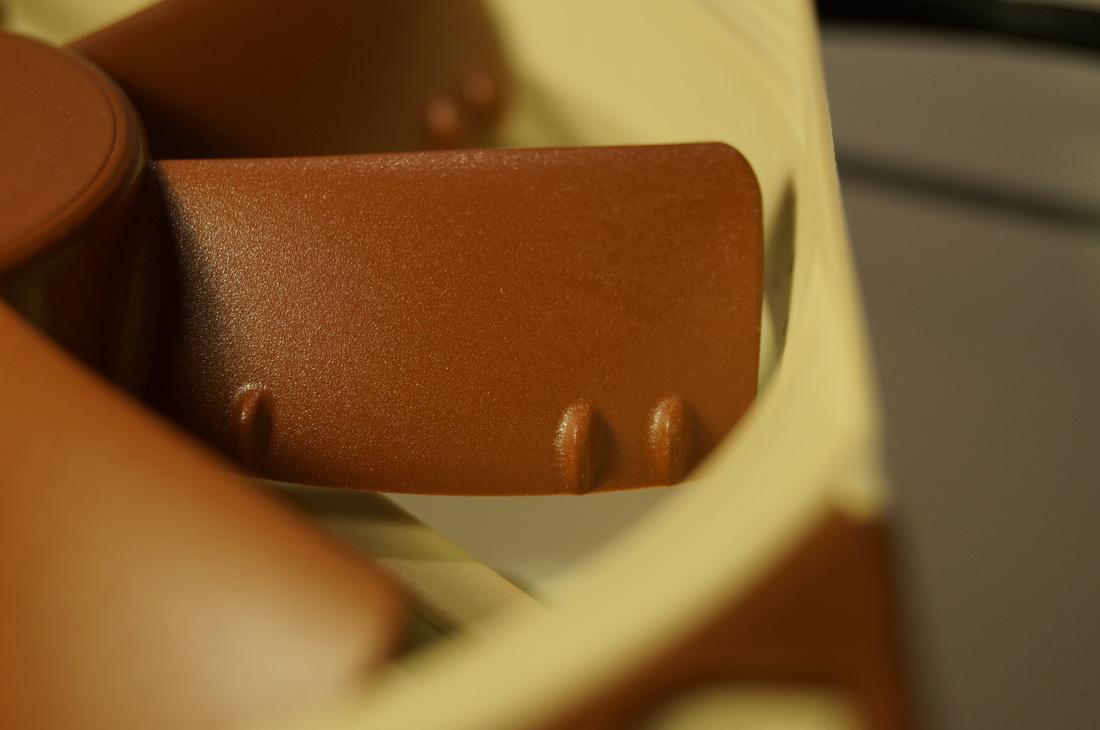I always felt Noctua's S series of fans weren't as powerful looking and commanding as the rest. Well these knew ones have little daggers on them!
Here's the spec:
NF-S12A PWM: Max RPM Max Airflow (m3/h) Noise dB(A) Static Pressure (mmH2O) |
|
|
|
NF-S12A FLX: Max RPM Max Airflow (m3/h) Noise dB(A) Static Pressure (mmH2O) | Without L.N.A 1200 107.5 17.8 1.19 | With L.N.A 900 83.2 10.7 0.73 | With U.L.N.A 700 65.8 7.4 0.51 |
NF-S12A ULN: Max RPM Max Airflow (m3/h) Noise dB(A) Static Pressure (mmH2O) |
|
|
|
Accessories: 30cm Extension cable, 4x fan screws, 4x Anti-vibration mounts, Low-Noise-Adaptor.
PWM: Y-Splitter
FLX: Ultra-Low-Noise-Adaptor, 4 pin Molex adaptor
ULN: 4 pin Molex adaptor
PWM: Y-Splitter
FLX: Ultra-Low-Noise-Adaptor, 4 pin Molex adaptor
ULN: 4 pin Molex adaptor
Design:
| Starting on the cable we have the same super high quality cable sleeving we have come to expect from Noctua products. Again though we still see the sleeving end before the fan, leaving the exposed wires to run through the chassis. It's upsetting to see what I can only call the highest quality cable sleeving, not cover the entire cable. |
Anyone familiar with Noctua fans will be aware of most of the features on this fan as Noctua have a habit of creating successful designs and turning them into a standard and a foundation for their next creation. With this said we see the same AAO frame (Advanced Acoustic Optimisation) made up of the anti-vibration pads, stepped inlet design and the inner surface microstructures.
And the SSO2 bearing system with brass bearing shell. On the PWM model we also get the custom PWM integrated chip.
The real change on this fan is the blades themselves. They feature the same 7 blade design that we saw on the S12B but the blades themselves are very different.
| These new blades feature a much flatter, squarer design than the previous S12B. The reason these blades are this way is to optimise the fan for airflow and noise. It's static pressure rating is reduced in doing so but in general you can only optimise a fan for 2 of the 3 factors. Noctua have the F, S & A series for these with the P being a mix for overall performance. |
| You will also notice what they call the 'Anti-Stall knobs'. Theses are little bumps along the blades that are designed to speed up the air and " Reduce the risk of undesired stall and flow separation phenomena. Essentially this means that while the fan has a low static pressure, the air is made to flow smoother helping it deal better with the static pressure. |
Performance:
I considered splitting the performance rating up into the different variants as that's the way it should be done but upon turning them all on it rendered this pointless. Both the PWM and FLX versions even at full speed are so close to silent that once you add any low-noise adaptors they become completely silent.
In any class of Noctua fans I have always seen a reason for the ULN variant as it truly is for the buyer that is going for total silence. Not just super quiet, but silence. With this fan I really can't see the point in the ULN variant as the FLX is just that good. You get the maximum airflow the S12A is capable of (around 60cfm) AND if you want you can completely silence it.
With the PWM variant you also get the PWM functionality though you dont get as many options with the accessories to lower the maximum fan speed.
To sum up:
PWM- Great airflow, PWM functionality, Near silent
FLX- Great Airflow, Near Silent, Ability to be fully silent.
ULN- Completely silent but not as good airflow as the other two. Less flexible as well.
In any class of Noctua fans I have always seen a reason for the ULN variant as it truly is for the buyer that is going for total silence. Not just super quiet, but silence. With this fan I really can't see the point in the ULN variant as the FLX is just that good. You get the maximum airflow the S12A is capable of (around 60cfm) AND if you want you can completely silence it.
With the PWM variant you also get the PWM functionality though you dont get as many options with the accessories to lower the maximum fan speed.
To sum up:
PWM- Great airflow, PWM functionality, Near silent
FLX- Great Airflow, Near Silent, Ability to be fully silent.
ULN- Completely silent but not as good airflow as the other two. Less flexible as well.
Conclusion:
Noctua have created here a fan that is too quiet for its own good. The FLX variant is so flexible that you get the best of both worlds. It can give you the maximum airflow (around 60cfm) the S12A is capable of, or it can be completely silent with adaptors.
This leads to me having to advise people to go with the FLX version if they are going for a 3-pin variant, the ULN version fills a gap that really doesn't even need to be filled for this fan. If however you are a true silence 'freak' then the ULN is theoretically quieter and is there as an option to you.
Noctua have made some vast improvements to the fan over the its S12B heritage. We have the newer colour shades along with all the added brand new features making this a definite GOLD award winner. Though we have never been a huge fan of the S-series fans, this is a huge step forward and with the addition of the array of variants you really can tailor your fan set up to your individual requirements. This may not be unique to the S-series but nevertheless in this context we are on another level to the other series in getting the perfect fan for the job.
The NF-S12A variants all have their pro's and cons but in my honest opinion I would say to go with either the PWM version or FLX version for their respective functionality and not really bother with the ULN version unless you really need the extreme properties it offers.
This leads to me having to advise people to go with the FLX version if they are going for a 3-pin variant, the ULN version fills a gap that really doesn't even need to be filled for this fan. If however you are a true silence 'freak' then the ULN is theoretically quieter and is there as an option to you.
Noctua have made some vast improvements to the fan over the its S12B heritage. We have the newer colour shades along with all the added brand new features making this a definite GOLD award winner. Though we have never been a huge fan of the S-series fans, this is a huge step forward and with the addition of the array of variants you really can tailor your fan set up to your individual requirements. This may not be unique to the S-series but nevertheless in this context we are on another level to the other series in getting the perfect fan for the job.
The NF-S12A variants all have their pro's and cons but in my honest opinion I would say to go with either the PWM version or FLX version for their respective functionality and not really bother with the ULN version unless you really need the extreme properties it offers.
Verdict:
Rating: 9/10
Value: 9/10
Value: 9/10
